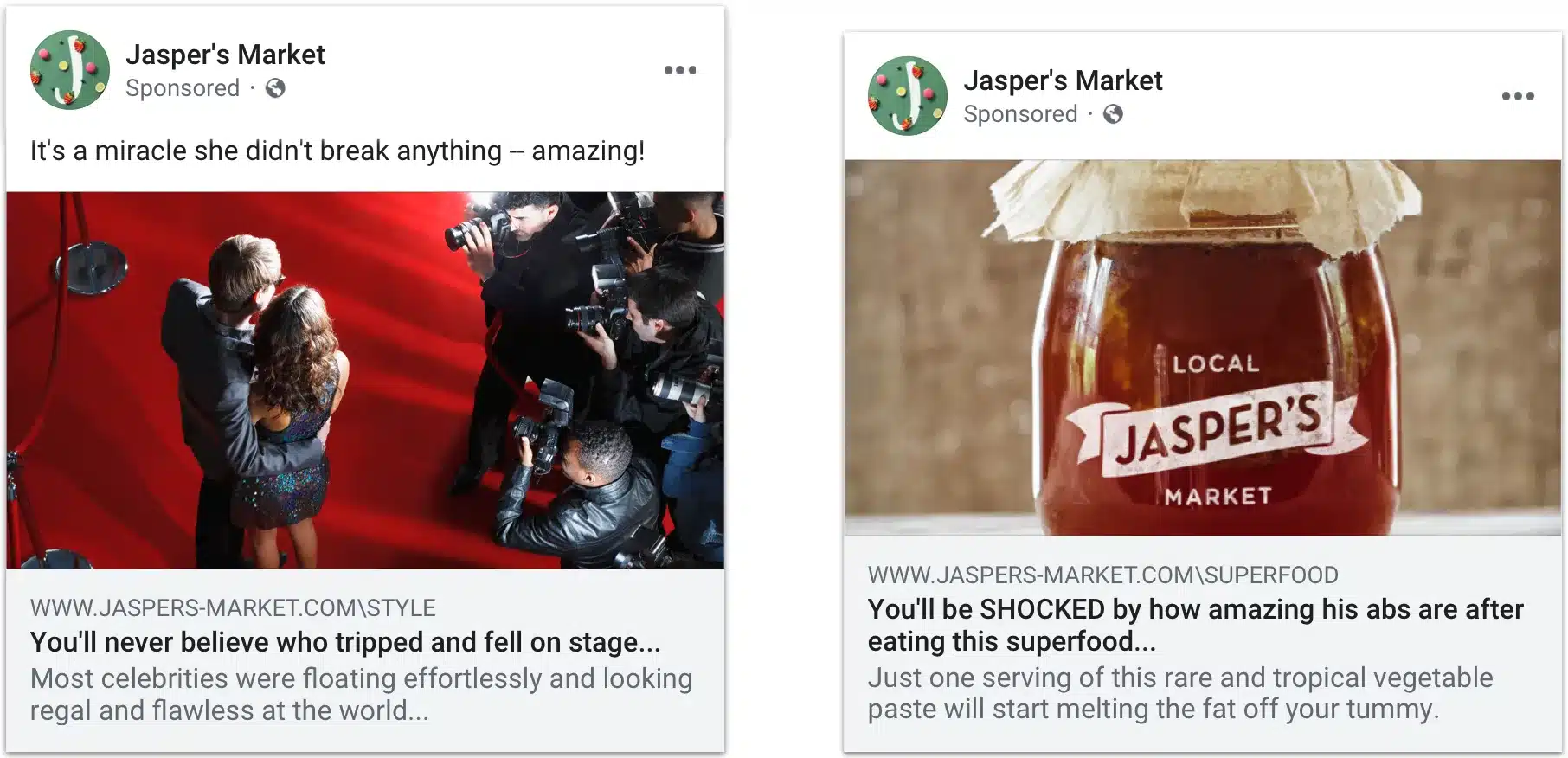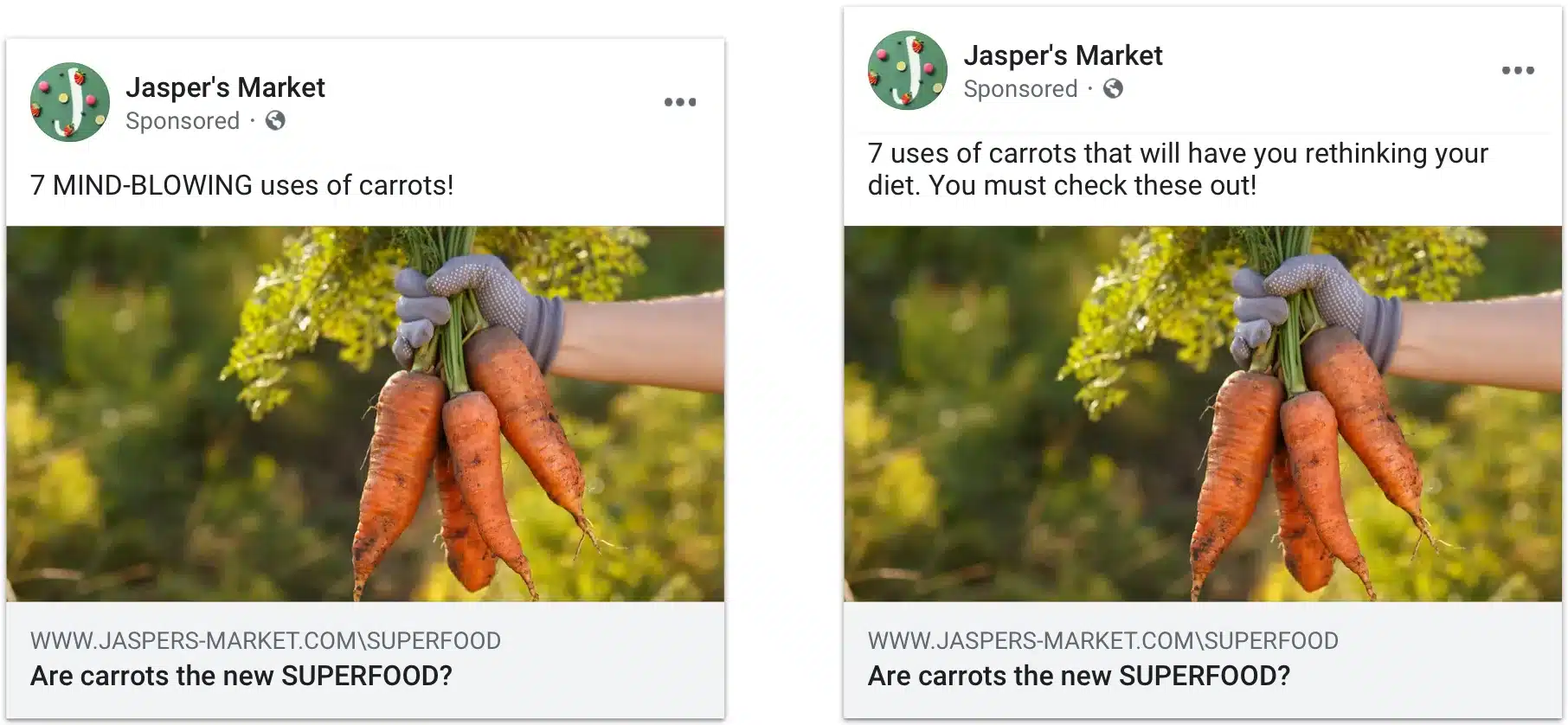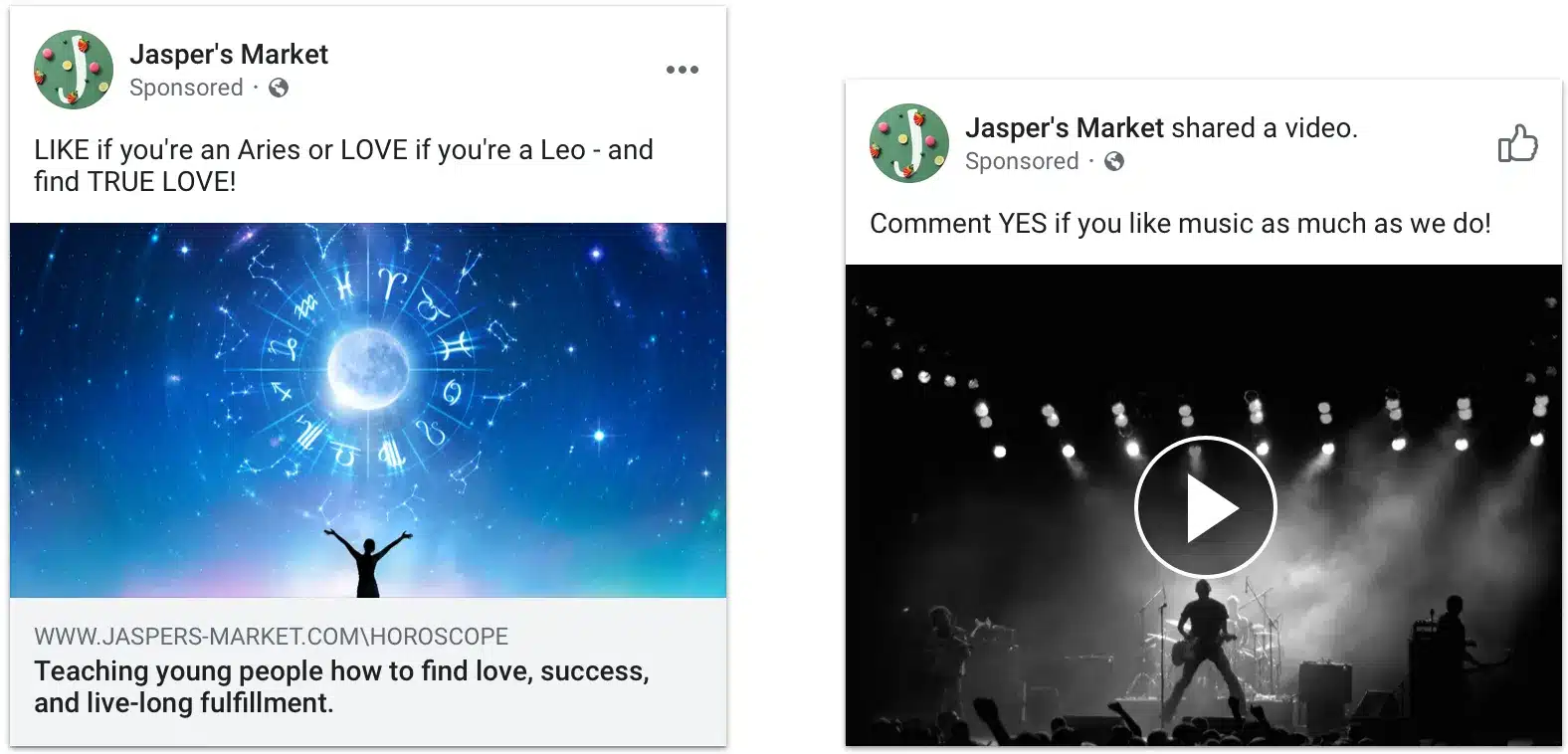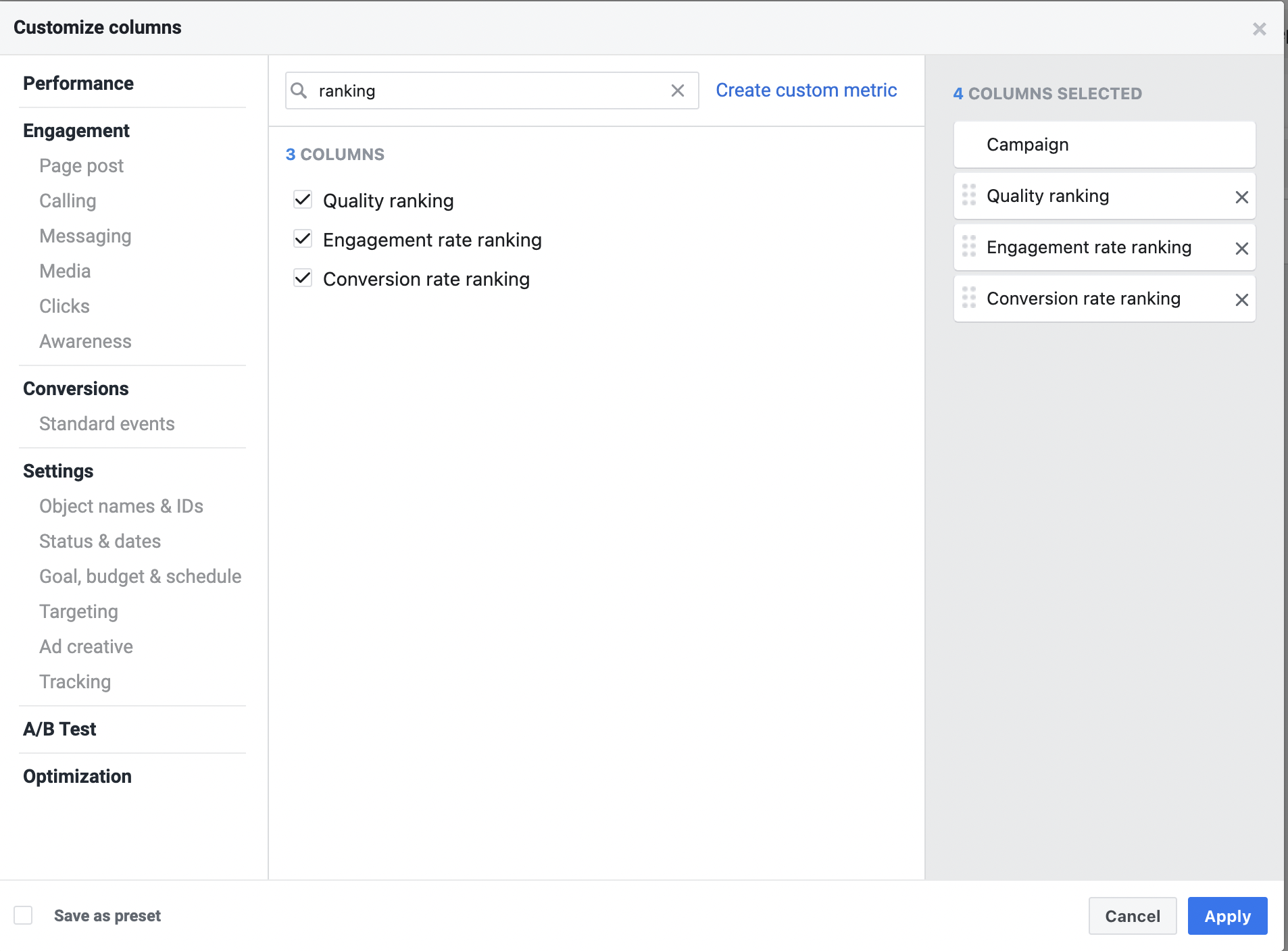Have you ever wondered what makes Facebook favor certain ads over others, rewarding them with lower CPCs and higher reach? It all comes down to how the Facebook ad auction works. Once you learn the mechanisms, you can implement improvements that will make the platform favor your ads instead of your competitors.
First of all, this is not like a traditional auction where the highest bidder wins the prize (and the prize, in this case, is the chance to show your ad). In the ads auction, how valuable your ad is to the viewer also counts. After all, Facebook wants to keep people on its platform for as long as possible. This means that they are not going to show bad ads for its best audience just because that advertiser is bidding higher. They always want to show the best ads they have available. This gives their users the best experience on the platform.
Understanding how the Facebook ads auction works will give you a big advantage in relation to your competitors. In this article, you’ll learn how to give your ads the highest ad quality score. By getting a high ad quality score you put your ads in front of the best audiences. This will leave your competitors with their ads placed in front of people less likely to convert.
When does a Facebook ads auction happen?
Each time there is an opportunity to show an ad to someone, an auction happens to determine which advertiser will show the ad to that person. Billions of auctions take place every day across Facebook, Instagram, Messenger, and the audience network (which is a group of apps that partner up with Facebook).
What is the Facebook ads auction goal?
Keep in mind that when Facebook delivers an ad, it has two main objectives:
1 – Create a positive experience for advertisers. They achieve that by helping them target their ideal audience and get the results they want.
2 – Create a positive experience for Facebook users. How? by showing ads that are relevant to them. The ads must not be spammy or click-baity.
The Facebook ads auction equation
In other to balance these two objectives, Facebook creates the ads auction system. The winner of the Facebook ads auction (or, in other words, the company that gets the chance to show the ad) is the one with the highest total value. The total value is determined by 3 things:
1 – Bid – Obviously, your bid matter. The bid is how much the advertiser is willing to pay in order to get their desired action. You can set your bids manually, but most often how high you bid is chosen automatically for you. If you have a larger budget, of course you’ll have an advantage.
2 – Estimated action rates – This number determines how likely someone is to engage with your ad. This is based on the history of ads that the person has previously engaged with. The fact that this person has previously engaged with other ads you had on the platform is also a factor taken into consideration.
3 – User value – User value, as the name says, determines how valuable your ad is to the viewer. The user value score is calculated based on how strict your ad is in following the guidelines. Many sources will determine the quality of your ads, including: feedback from people who viewed and hid them, assessment of clickbait, engagement bait, post-click experience, and other user experiences, according to Meta.
In summary, this is the equation to choose the winner ad by Facebook’s algorithm:

How can you pay less for showing your ads?
There are five key factors that determine how much you pay for your ads. Having a good understanding of them can help you improve your results in the auctions.
Competition
If too many advertisers are competing for the same Facebook users, you are likely to pay more. This is why CPCs tend to increase at times like Christmas, Black Friday, Cyber Monday, etc.
Bid strategy
Whether you choose automatic or manual bidding can affect how much you pay. If you choose manual bidding and you bid very low, you’ll miss many chances of showing your ads. This happens because other advertisers with automatic bidding selected will bid higher than you did.
Placements
Certain placements are more expensive than others. The newsfeed, for example, usually costs more. Having fewer placements will likely increase your CPC. On the other hand, some placements are not worth the “discount”. For example: Do you have an ad that is very aesthetically beautiful and the image is crucial to close sales? avoid the right column. In this placement, the image appears very small. Also, many marketers avoid the audience network all altogether. This placement also has a good amount of bots clicking on the ads.
Ad relevance
The more relevance your ad has, the less you are likely to pay. This is why you must have a clear message and follow the guidelines. The more your ad matches the history of what the person engages with, the higher you are likely to pay. In those situations there is a much higher chance that this person will convert. Facebook will make your bid higher for that.
Optimization
How you choose to optimize your ads can influence the cost. Conversion campaigns optimized for purchase tend to have a higher CPM than awareness campaigns, for example.
When you optimize a campaign for purchase, that means Facebook will target people who have the habit of making purchases after clicking on ads. At the end of the day, almost everybody wants their target audience to make purchases. Most advertisers announcing on Facebook want to get people to click on the link, go the their website, grab the credit card, and buy something. There is a large amount of advertisers fighting for these Facebook users. If you target them as well by optimizing your campaign to purchases, you are more likely to pay more per click.
Remember: the more valuable your ads are, the lower you pay.
Best practices to improve the quality and performance of your ads
First of all, Facebook takes into consideration if your ad is engaging. For example, if someone is watching a whole video ad, looking at an image for a longer period of time than people normally do when looking at ads, and clicking on the button “see more” to read the rest of the copy. That can improve your ad’s performance.
On the other hand, if someone clicks to hide your ad, Facebook sees this as extremely negative. It’s obviously even worse if people click to hide all your ads or if they report your ads as being inappropriate or spam.
Remember that Facebook wants to maximize the user experience in order to prevent people from leaving the app. That’s why, if the system finds any attribute that it considers low quality, it will punish your ads by making them less competitive in the auctions. As a consequence, you’ll pay more.
Below you’ll find some of the key attributes that can lower an ad’s quality. Not only that, but Facebook also takes into account the post-click experience. If you continue publishing ads containing these low-quality attributes or policy violations, Facebook’s system will consider your Facebook page, domain, and ad account low quality as well, making your future ads also less competitive in the auctions. This means that it will cost you more to advertise, and you’ll see fewer results, so follow the guidelines closely.
Attributes of low-quality content
Withholding information
Ads that withhold, or in other words, hide information in order to get someone to click a link in order to understand the full context of something. The examples below provided by Facebook demonstrate this very well.

Sensationalized language
This includes using exaggerated headlines or trying to force a reaction from people to a degree that creates an unexpected experience when people click on a landing page.

Engagement bait
When an ad uses spammy content that asks people to engage with it in order to get more likes, comments, and shares.

Attributes of low-quality post-click experiences, including landing pages:
- An excessive volume of ads in comparison with the content.
- Interstitial ads or pop-ups: This includes any ads that interrupt or disrupt the user experience. It doesn’t include disclosures that are required by law or logins to gain access to private content.
- Misleading experiences: websites that are not true to the products they are selling, do not have expected shipping times, have bad customer support experiences, etc.
- Bounce rate and dwell time and dwell time are also taken into consideration when Facebook is calculating the quality of your score. A high bounce rate and a low dwell time are signs of a bad landing page experience.
Does Facebook tell me how users are reacting to my ads?
Yes. To understand how users are reacting to your ads, you can check the ad relevance diagnostics.
Facebook has 3 KPIs to help you understand how your ads are performing in comparison with your competition. These KPIs are quality ranking, engagement rate ranking and conversion rate ranking. You can find those by clicking in “modify columns” and then search for “ranking”, as you can see in the image below.

Each ad you run is going to get its own quality ranking (where there is enough data to give it a score). What that ranking indicates is your ad’s perceived quality compared to other ads that are targeting the same audience.
Let’s look at the definition of each one of these metrics. Analyzing them in combination will give you a much more holistic picture of the state of your ads than analyzing them individually. It will also help you understand how you compare to your competitors in the Facebook ads auction.
Quality ranking
Quality ranking is a metric that shows how the perceived quality of your ad compares to the other ones competing for the same target audience. The quality is measured through various signals, such as feedback from people viewing or hiding the ad and if the ad contains low-quality attributes.
Engagement rate ranking
Engagement rate ranking says how the engagement your ad is expected to have compares to the engagement other ads competing for the same audience are also expected to have. In other words, if Facebook expects the ads from your competitors to have a higher probability of gaining more likes , comments, and shares them yours, you’ll score lower on this metric.
Remember that asking people to engage with your ad will not help you here, as it’s considered engagement bate and it will lower your score.
Engagement rate ranking isn’t available for the following campaign optimization types: impressions, ad recall lift, reach, custom conversions, or value.
Conversion rate ranking
Similar to engagement rate ranking, conversion rate ranking compares the expected conversion rate of your ads against your competitors. By expected conversion rate Facebook means how likely someone who views your ad is to complete the advertiser’s desired action.
It’s important to highlight that some products and services tend to have lower conversion rates when compared with other ads fighting in the same auction. Products considered high-end and with high prices, like jewelry made of gold and mattresses, will expect to have a lower conversion rate ranking than products like sneakers and makeup.
Conversion rate ranking isn’t available for the following campaign optimization types: impressions, ad recall lift, reach, custom conversions, or value.
Observations: Quality ranking, engagement rate ranking, and conversion rate ranking are not available for dynamic creatives. Also, those metrics only use data from the last 35 days.
How is the ad ranking measured?
These three metrics will offer you the following ranking results for your ads:
- Above average (above 55%)
- Average (35% to 55%)
- Below average (bottom 35% of ads)
- Below average (bottom 20% of ads)
- Below average (bottom 10% of ads)
It means that your ad had an expected engagement rate among the top 55% of the ads with the same optimization goal and competing for the same target audience. At least 45% of the ads with the same optimization goal competing for the same target audience are considered to have a lower expected engagement rate by Facebook.
How should I use these metrics to help my ads win in the Facebook ads auction?
It’s more impactful to move a ranking from low to average than it is to move a ranking from average to above average. Focus on improving low rankings first rather than improving average rankings first.
Instead of seeking the ideal creative or the ideal audience, seek the ideal creative and audience combination. Different audiences have ideal creatives, so keep testing. Another alternative is to target broadly. Relying on Facebook’s delivery system to find the best people to show your ad to can potentially increase your score.
Keep in mind that if an ad is already performing well, worrying about ad relevance diagnostics may not be needed. Sometimes, ads that have below-average ad relevance diagnostics rankings are performing well and have a high ROAS. Optimize your ads based on conversions, and not on quality ranking, engagement rate ranking, or conversion rate ranking.
So why should you care about the Facebook ads auction algorithm and ad ranking?
You should care because a higher ad quality score leads to lower ad costs. By improving your ad quality ranking you can win more auctions with a lower bid than your competitors.
Facebook actually states in their documentation that if you consistently create low-quality ads, or get ads rejected often, they might associate your page, ad account, domain, or other assets with being low quality as well. When this happens all of the ads you run from those assets (meaning the page, the ad account, your landing page, your Instagram account, and your domain) may be considered low quality. This will drop the overall performance of not just a single ad that has a low Facebook ad quality ranking, but the performance of ALL THE ADS in the account.
Expert tip!: Keep your frequency down (frequency is how often people see your ads). If people are seeing the same ad over and over again they will be more likely to try to hide it. Even worse, hide all the ads from you if they get irritated enough. So create new ads regularly, change the creative, the copy or simply make sure your audiences are not too small.
So how do you win the Facebook ads auction?
Can you win the Facebook ads auctions and get your ads shown to the highest quality users by simply having the highest budget and outbidding everyone from the competition? Most likely not. And even if you could, that would not be worth it. The goal is to pay as little as possible to win the auctions. For that to happen you must have a good balance between advertiser bid, estimated action rate, and user value.
The most effective way to win the auction, is by creating amazing ads that speak to your audience, grab attention, and follow the guidelines. Combine that with a great landing page experience and you’ll score higher. The reward is to have Facebook show your ads to the best users, get higher reach and lower CPCs.









